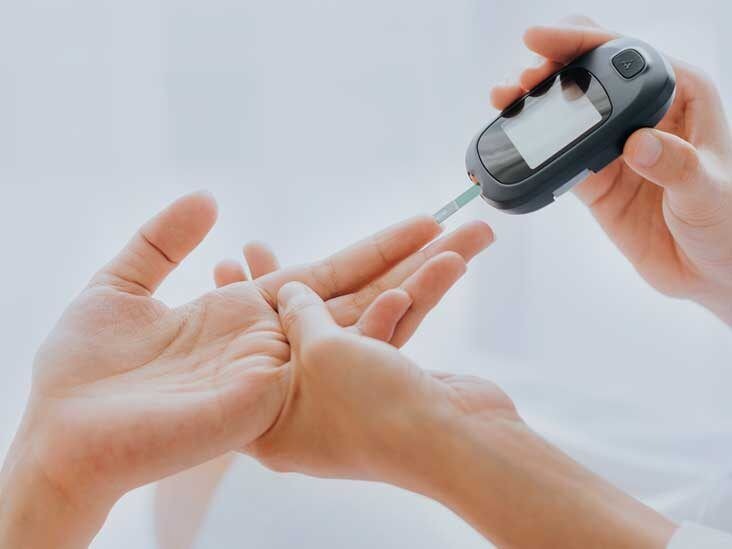Diabetes management is difficult but not impossible. You have to be extra careful about your diet, lifestyle, and habits. In addition to taking your medication and going for regular checkups, there are some steps you can follow to effectively manage diabetes and live a long, healthy life.
Contents
1. Learn Your Diabetes ABCs

Source: healthline.com
For effective diabetes management, you need to focus on three key areas, also known as the ABCs of diabetes. This includes:
A1C: This test measures your blood glucose levels over the past 2 to 3 months. Every diabetic has an ideal A1C range, so consult with your healthcare provider to keep it in check.
Blood Pressure: The normal blood pressure range is 140/90 mm Hg. High blood pressure can damage your heart, kidneys, and eyes.
Cholesterol: High cholesterol levels can also increase the risk of heart problems. Check your cholesterol levels regularly and learn to control them.
Learning your diabetes ABCs will help you manage your condition and clarify when to seek help.
2. Make Healthy Food Choices
One of the best ways to manage your diabetes ABCs is by eating a healthy diet. You can ask your health care provider or nutritionist for a meal plan catering to your condition. A healthy diet plan for diabetic patients includes the following groups:
- Non-starchy vegetables, such as broccoli, spinach, and mushrooms
- Lean protein, such as tofu, fish, chicken, and eggs
- Variety of fruits
- Whole grains found in oatmeal, brown rice, and quinoa
- Healthy fats, such as nuts and olive oil
Experts recommend avoiding processed meats, alcohol, fried food, sugar, and saturated fats as they can increase cholesterol levels. Lastly, drink lots of water and pay attention to portion control.
3. Do Regular Exercise

Source: 1mg.com
Regular physical exercise is critical for managing diabetes. It can lower blood pressure, help control weight, raise healthy cholesterol, and strengthen muscles. Exercise can also reduce the risk of heart disease, which is a significant concern in diabetes.
Aim to do at least 30 minutes of moderate to intensive exercise. Start with 10-minute sessions to build stamina and keep increasing the time. You can do a range of exercises, such as:
- Brisk walking
- Jogging
- Swimming cycling
- Yoga
- Tai Chi
With resistance training and balance exercises, you can improve flexibility and reduce the risk of falls or injuries.
4. Pay Attention to Your Feet
People who have diabetes are at an increased risk of foot conditions, such as open sores and infections. High blood sugar levels lead to poor circulation and nerve damage in your feet, leading to numbness and tingling. If left untreated, you might experience dry, cracked skin, cuts, ulcers, calluses, and ingrown toenails.
Here’s what you can do to take care of your feet as a diabetic:
- Regularly inspect your feet for cuts and blisters.
- Keep your feet dry and moisturized.
- Wash your feet with warm water.
- Trim your toenails.
- Always wear soft, dry socks.
- Wear shoes that fit well.
- Wear shoes and socks, even when you’re indoors.
- Seek medical help if you have open sores or ulcers on your feet.
5. Wear Diabetic Socks

Source: yourfamilyfootcare.com
One of the most effective ways to take care of your feet is by wearing specialized diabetic socks. They have the following features:
- Moisture wicking
- Seamless
- Soft yarn
- Padded soles
- Non-elastic binding
- Antimicrobial properties
Diabetic socks are designed to keep feet dry and comfortable all day long. They fit snugly but not too tightly, ensuring proper blood circulation and mild compression.
6. Take Care of Your Teeth
Studies show that people with diabetes are more likely to have gum diseases, which can lead to bleeding and swollen gums. Moreover, diabetes can also increase the risk of tooth decay. When your mouth remains excessively dry due to high glucose levels and decreased saliva production, it provides the perfect environment for bacteria to thrive.
Since diabetes lowers the ability of your immune system, minor sores and infections take longer to heal. If left untreated, you might also experience taste impairment.
Maintain good oral hygiene by brushing your teeth twice a day. Use a toothbrush with soft bristles and an antibacterial mouthwash. Seek medical help if you experience excessive bleeding gums to reduce the risk of more severe issues.
7. Quit Smoking

Source: loyolamedicine.org
Smoking has shown to exacerbate diabetes-related conditions, including kidney failure, heart diseases, and vision loss. It allows reduced blood circulation, leading to foot ulcers. Lastly, smoking is incredibly harmful to your teeth and gum health.
There are many ways to quit smoking. Seek help from your healthcare provider, who might recommend nicotine replacement therapies (NRTs). Set goals for yourself and prepare an environment to help you stay on track. This can include identifying your triggers, managing stress, and throwing away ashtrays and lighters.
You can also join a support group to get encouragement and support for quitting smoking.
